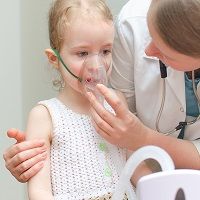Article
Children with Asthma and Eczema More Likely to Be Bullied at School
Author(s):
As summer comes to a close and many have already sent their children off to a new year of school, a study in PLOS One suggests that children who have asthma or eczema may face significant challenges fitting in with their peers.

As summer comes to a close and many have already sent their children off to a new year of school, a study in PLOS One suggests that children who have asthma or eczema may face significant challenges fitting in with their peers.
Asthma and eczema are known to induce anxiety in children, but most research looking at the impact of this anxiety comes from parental reports of behavioral problems. Very little research has looked at the school environment, despite how fraught with anxiety it can be for even healthy children. The few studies that have been done show mixed results, with some showing that children with these conditions are more likely to face bullying. As the study authors pointed out, “Both conditions have symptoms that can be noticeable to others, necessitate the use of medications, and result in school absence; thereby marking affected children as ‘different’ and potentially affecting their peer relationships.”
The PLOS One study used data from a population-based birth cohort to examine the social and mental well-being at school of eight-year-old children with rash or wheeze. The sample was from the population-based Avon Longitudinal Study of Parents and Children ALSPAC, as well as associated child-reported outcomes for those children. Child rash and wheeze symptoms were reported annually by the mother from when child was aged 6 months until age 7 years 7 months. The rash questions relate to dry, itchy rashes in joints and creases, which likely represent eczema. To be included in analyses, children had to have their rash and wheeze status reported in at least one questionnaire in each period. Teacher information was collected using data from an annual questionnaire. Children self-reported on their school life, including whether they were happy; felt left out; or were bullied (never, a little bit, quite a lot, all the time).
Children with persistent (OR 1.29, 95% CI 1.02 to 1.63) and late onset (OR 1.48, 95% CI 1.02 to 2.14) rash were more likely to report being bullied, and children with persistent wheeze to feel left out (OR 1.42, 95% CI 1.10 to 1.84).
The results are not as dire as one might expect, despite that fact that they suggest that children with persistent wheeze have more difficulties forming friendships at school and children with rash at school age reported an increased risk of being bullied. Still, the vast majority of children with these conditions reported positively on their school life. But the news is likely to get worse; the children in this study were quite young and most types of bullying increase with age.
The study authors suggest that children with symptoms of asthma or eczema be offered additional interventions, such as education of their school-aged peers.





